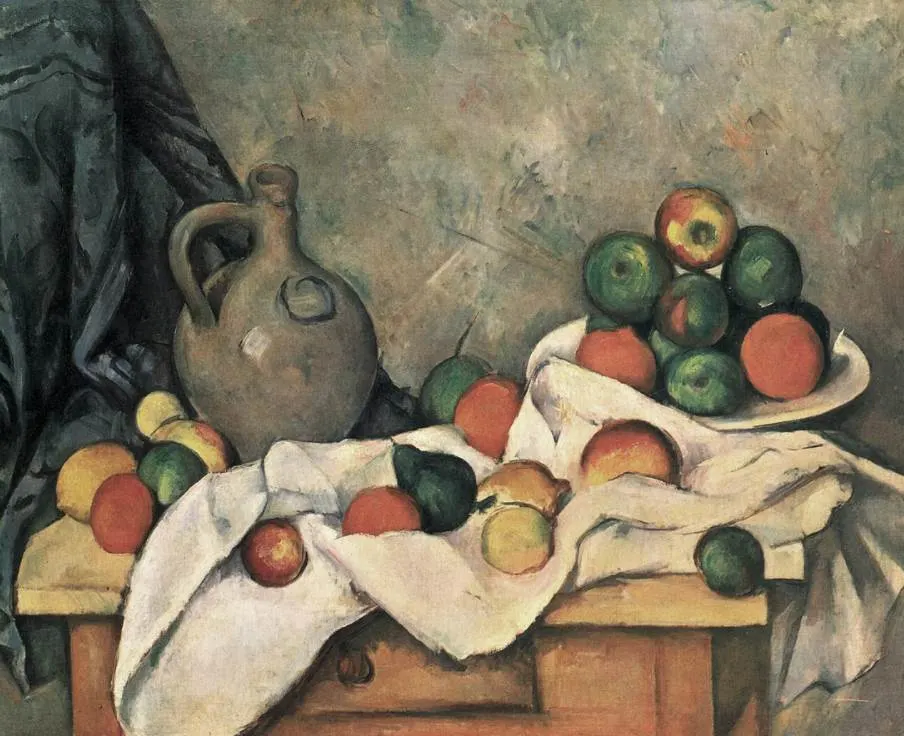Paul Cézanne (1839-1906) left his hometown of Aix-En-Provence for Paris in 1861. He did so to pursue an artistic career, something he had dreamed of despite the wishes of his father who was a successful banker.
He met Camille Pissarro and other emerging Impressionist artists and gradually developed his style of painting. He turned the loose brushstrokes of Impressionists into much smaller ones which together make up the elements of the overall composition.
Cézanne not only became one of the most famous Post-Impressionist artists of the late 19th century but is also credited with forming the bridge between Impressionism and modern art movements of the early 20th century. This includes both the members of the Fauves and Cubist artists.
Let’s take a closer look at some of the most famous Paul Cézanne paintings, artworks that define the career of this influential French artist.
1. The Card Players
- Date created: 1894-1895
- Dimensions: 47.5 × 57 centimeters (18.7 x 22.44 inches)
- Location: Musée d’Orsay, Paris, France
The Card Players is one of a series of paintings with the same subject that Paul Cézanne painted during the 1890s. It’s one of the most famous series in what is referred to as the artist’s “final period” which started in the early years of the final decade of the 19th century.
There are a total of 5 paintings in this series and all of them vary significantly in size, color scheme, and composition. The artist completed a large number of studies of figures before he produced this series. One of the card player paintings was sold for $250 million back in 2011 to the Royal family of Qatar, the highest price paid in an auction at that time.

2. The Large Bathers
- Date created: 1898-1905
- Dimensions: 210.5 × 250.8 centimeters (82.87 × 98.25 inches)
- Location: Philadelphia Museum of Art, Philadelphia, United States
The Large Bathers or “Les Grandes Baigneuses” is another work in a series of paintings featuring bathers. These were produced at various times during the artist’s career ranging from the 1870s to the first decade of the 20th century.
The painting in the Philadelphia Museum of Art is the largest in this series and is often described as the Magnum Opus of Paul Cézanne. Better yet, some critics define it as one of the ultimate masterpieces of modern art. This is remarkable because he worked on it for 7 years and it remained unfinished upon his death in 1906.

3. The Basket of Apples
- Date created: 1893
- Dimensions: 65 × 80 centimeters (25.6 × 31.5 inches)
- Location: Art Institute of Chicago, Chicago, United States
The Basket of Apples is one of the most distinctive still lifes ever created. It’s the epitome of what Post-Impressionism was about, which means the distortion of the ideals of Realism artists who were predominant in earlier parts of the 19th century.

Since the time of Caravaggio and a brief period during the Dutch Golden age in the 17th century, still lifes depicting fruit and other common object had been mostly abandoned in favor of monumental history paintings, portraits, and landscapes. Cézanne singlehandedly revived the genre, similar to the works of Caravaggio painted a Basket of Fruit (1599) in the late 16th century.
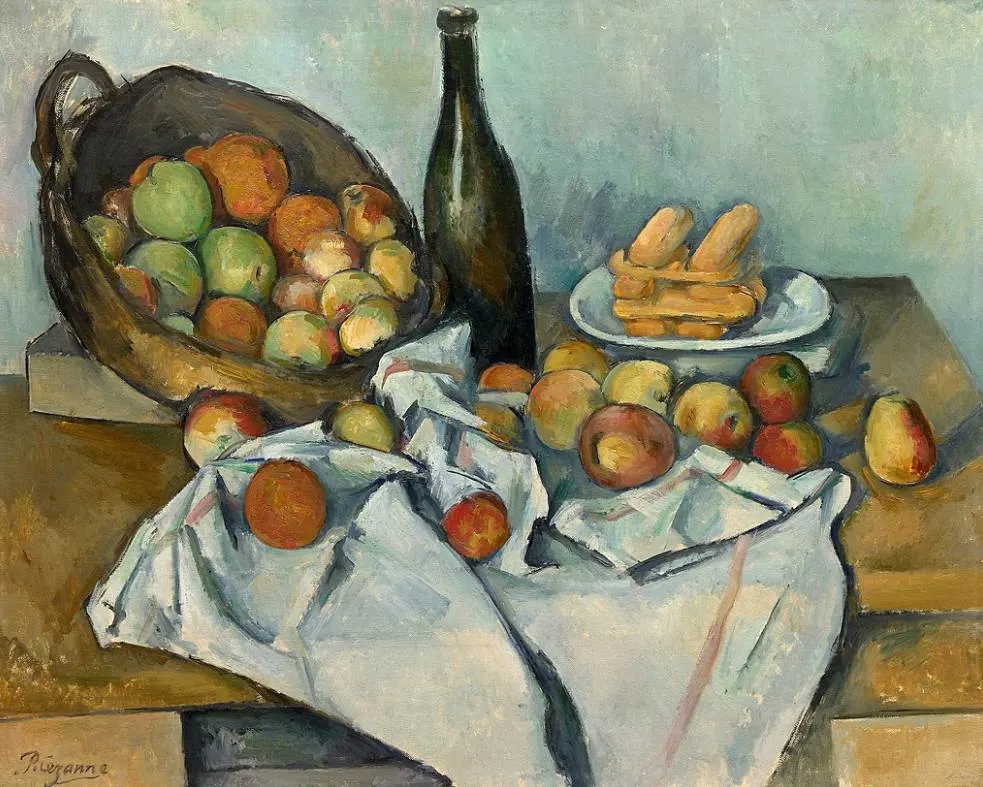
4. Mont Sainte-Victoire and the Viaduct of the Arc River Valley
- Date created: 1882-1885
- Dimensions: 65.5 × 81.7 centimeters (25.8 × 32.2 inches)
- Location: MET Museum, New York City, United States
Mont Sainte-Victoire and the Viaduct of the Arc River Valley depicts a huge limestone mountain near the artist’s hometown of Aix-en-Provence in the southeast of France. We can see the town emerging in the background of this remarkable landscape painting.
We can also see the Valley of the Arc RIver and a railway bridge that is part of the line between Aix-Marseille. The artist produced a series of paintings with the same subject but from different points of view and a wide variety of color schemes.
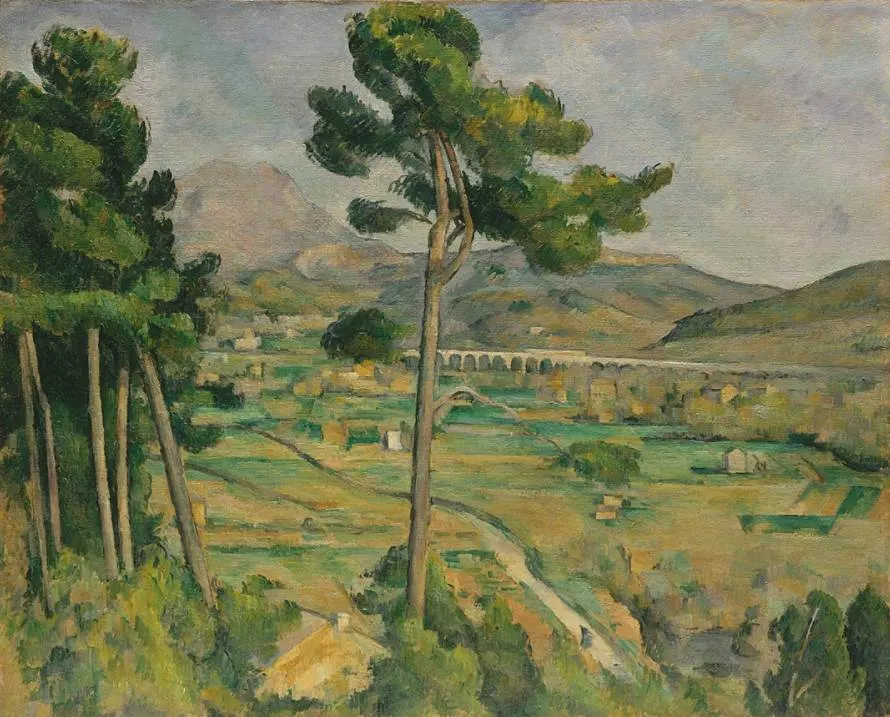
5. The Artist’s Father, Reading L’Événement
- Date created: 1866
- Dimensions: 198.5 x 119.3 centimeters (78.12 x 46.93 inches)
- Location: National Gallery of Art, Washignton D.C., United States
The Artist’s Father, Reading L’Événement depicts, as the name suggests, Paul Cézanne’s father Louis Auguste Cézanne (1798–1886), who is reading his favorite newspaper. His father was a banker and wanted to stay up to date with the latest business news.
Despite his reluctance to accept his son’s artistic career, he did eventually come to terms with it and sponsored Paul in his pursuit. This allowed a sense of artistic freedom that wasn’t available to most of his colleagues who had to scrap along to make ends meet. On top of that, he got a large inheritance that made him completely financially free upon his father’s death in 1886.
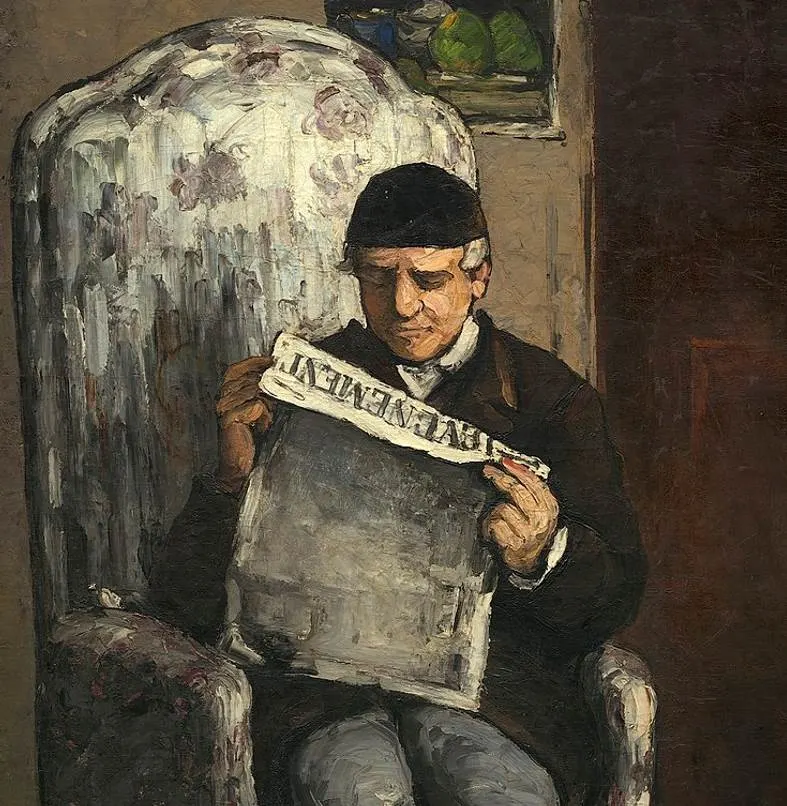
6. The Boy in a Red Vest
- Date created: 1889-1890
- Dimensions: 80 × 64.5 centimeters (31.5 × 25.4 inches)
- Location: Foundation E.G. Bührle, Zürich, Switzerland
The Boy in the Red Vest depicts a young boy who is resting his head on his elbow. This is one of the 4 paintings of the same subject that feature the by in different positions and poses while wearing the same attire.
This version of the painting is the most famous of the 4 and depicts the Italian boy in a sort of melancholic state. It’s the only one located in Europe while the other versions are part of the collection of museums in the United States. It was stolen in 2008 and recovered in Serbia in April 2012 and brought back to the museum in Zürich.
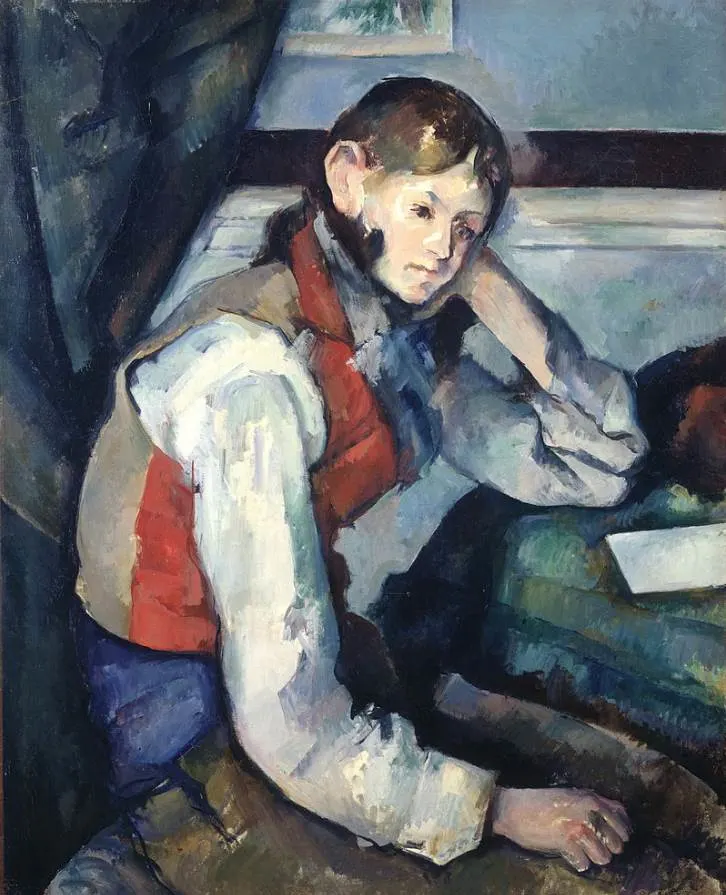
7. The Hanged Man’s House
- Date created: 1873
- Dimensions: 55 × 66 centimeters (22 × 26 inches)
- Location: Musée d’Orsay, Paris, France
The Hanged Man’s House is a painting with an interesting backstory because it was first exhibited at the first exhibition of Impressionists in 1874. This was the exhibition where Claude Monet (1840-1926) exhibited “Impression, Sunrise,” the work that coined the name of the 19th-century art movement.
The influence of the Impressionists that he hung out with during this period in his career can be seen in the loose brushstrokes that he used. He later changed his technique in favor of objectifying the elements of his paintings, the next step in the development of the Impressionist movement.
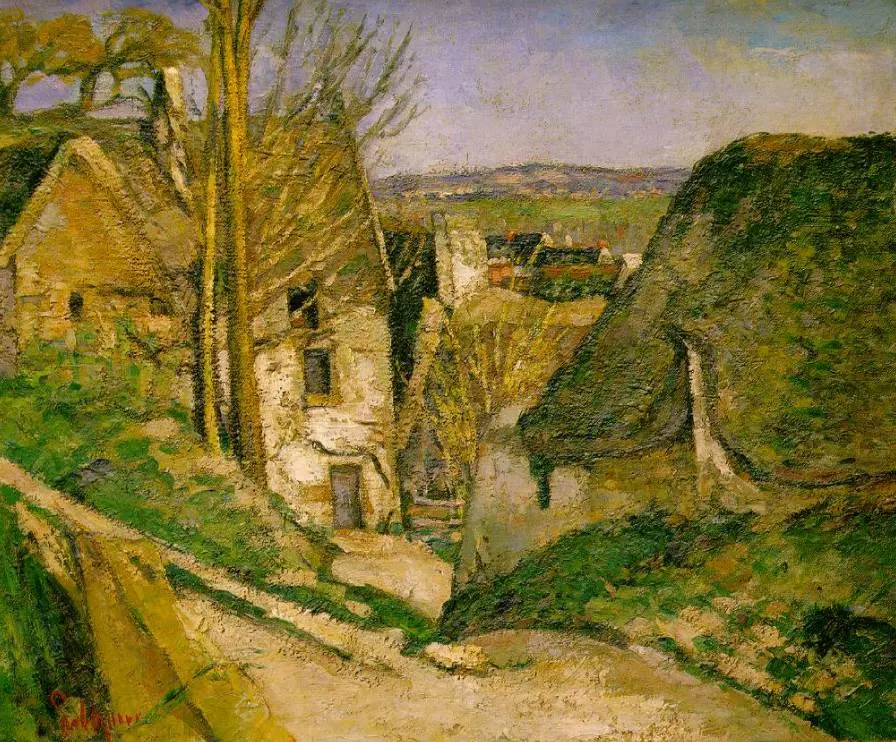
8. Pyramid of Skulls
- Date created: 1901
- Dimensions: 37 × 45.5 centimeters (15 × 17.9 inches)
- Location: Private collection
Pyramid of Skulls is one of the multiple paintings depicting human skulls from the final period of the artist’s life. This was a time that he had a rather gloomy outlook on life, something that started when he started suffering from diabetes in the early 1890s.
He spent extended periods by himself and wasn’t able to socialize anymore. He also separated from his wife Hortense and became a devout Catholic in 1891. This reflected in a keen interest in the subject of death and a series of paintings featuring human skulls.
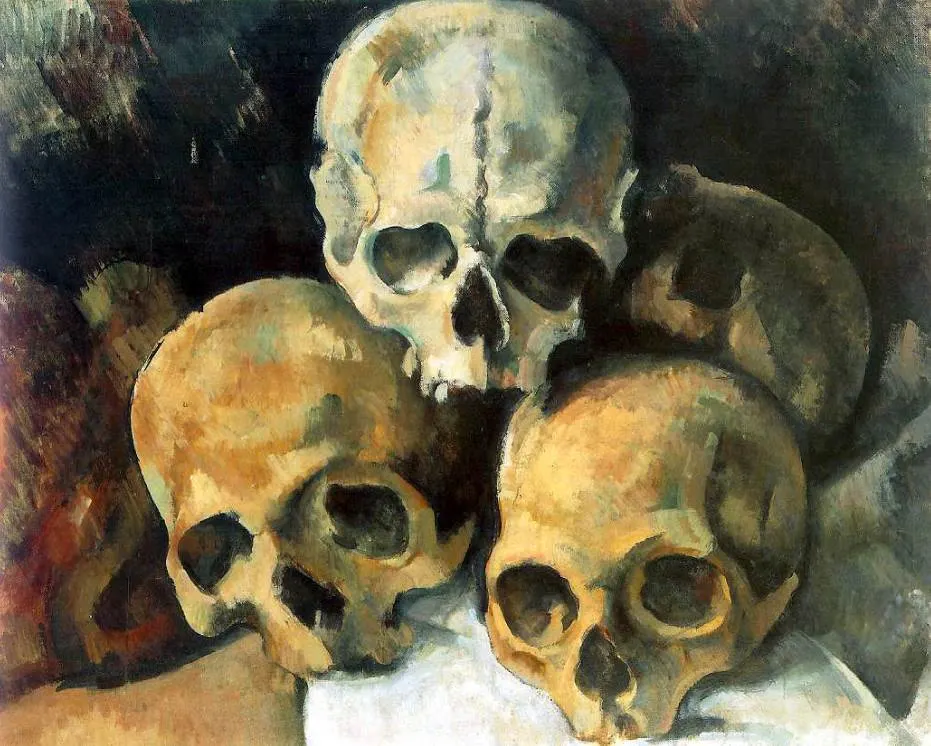
9. The Bather
- Date created: 1885
- Dimensions: 127 x 96.8 centimeters (50 x 38.12 inches)
- Location: Museum of Modern Art, New York City, United States
The Bather depicts an adolescent boy who reluctantly steps into the water. It’s a far cry from the heroic male figures that were depicted in previous centuries and portrays the young man as sensitive, anxious, and completely unheroic.
The landscape is obscure and there is no exciting backstory. The most interesting fact about The Bather is that Cézanne got his inspiration from a photograph of a man rather than from a live model. This picture was taken in a studio using revolutionary methods at the time which was photography on film. This novelty emerged in the late 19th century that made photography available for everybody.
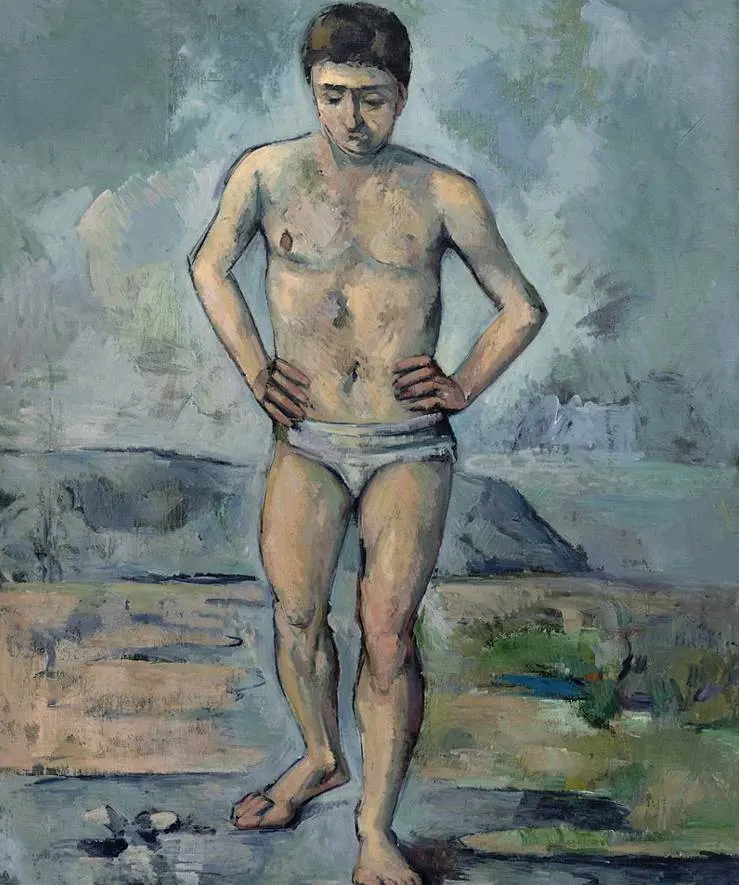
10. Curtain, Jug, and Fruit Bowl
- Date created: 1893-1894
- Dimensions: 60 × 73 centimeters (23.5 × 28.75 inches)
- Location: Private collection
Curtain, Jug, and Fruit Bowl is the English name of a painting known as “Rideau, Cruchon, et Compotier.” It’s another still life in which Paul Cézanne experimented with forms and balance in objects and an attempt to revive this particular genre.
This painting was once owned by Paul Gauguin (1848-1903) and subsequently changed hands multiple times the following decades. It was sold at an auction at Sotheby’s, New York City for the astounding figure of $60,502,500 in 1999. This is the equivalent of over $90 million today, an amount that still makes it the most expensive still life ever sold at an auction.
